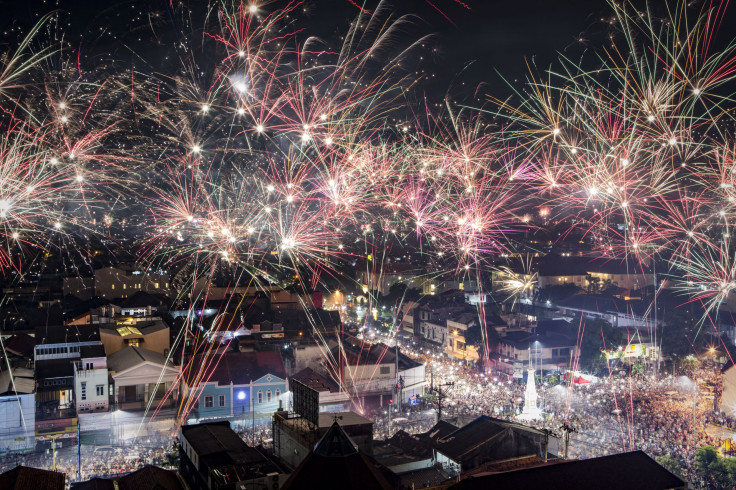New Year's Eve Traditions Around The World 2019: How Other Countries Celebrate

Americans are used to celebrating the New Year’s Eve, lighting firecrackers and raising their champagne glasses to past at midnight, or if one is from New York or happen to visit the Times Square, yell himself or herself hoarse when the countdown begins for the ball drop. But did you know, not all countries have similar traditions to kick off the New Year?
With less than a day to say farewell to 2018, here is a look at some of the unknown and unusual traditions of New Year’s Eve celebrated across the globe courtesy, Indy Star, Perth Now and Fiji Times:
Netherlands: New Year’s Eve is an occasion when people binge on fried oil balls, or oliebollen, which are a doughnut-like dumplings kneaded with raisins or sultanas dropped in a deep fryer and dusted with fine sugar. The delicacies were traditionally consumed by the Germanic tribes between Dec. 26 and Jan. 6, which was the Yule time. These are sold by street carts and are also consumed in other celebratory occasions.
Germany, Austria: Pork is considered to bring good luck and prosperity in these countries and hence, the animal appears in many forms in on the dinner table during New Year’s Eve. In Austria, for example, the main course consists of suckling pig, along with pig-shaped marzipans for dessert. The food is accompanied with red wine punch that is spiked by cinnamon and spices. Sweets like champagne truffles and various kinds of chocolates are also inspired by the shape of the animal in Vienna during this time of the year. The eve of Saint Sylvester is celebrated in Germany during New Year’s Eve. People also make good luck pigs from an array of ingredients to gift to each other.
Greece: Greek traditions during the New Year’s Eve involve onions and pomegranate. A pomegranate signifies prosperity and good luck for them and is traditionally hung above the door throughout Christmas, till New Year’s Eve. At the stroke of midnight, when the rest of the world raise their glasses or light firecrackers, the pomegranate is thrown against the doorframe as a sign to usher in great luck for the next year. Onion, which is also hung beside the pomegranate in some houses are used to hit children on the head in order to wake them up.
Ecuador: As soon as the clock strikes 12 at night, people of this country rush to burn scarecrows stuffed with newspaper. The scarecrow symbolizes any unfortunate events that might have transgressed one’s life in the past year or ill feelings, one might have harbored toward others. Since fire is considered a purifying agent, the burning of the scarecrows signify the wiping out of all kinds of negativity and ushering in positivity with a cleansed mind. Some of the people are also used to burning portraits or pictures of people or events that caused them pain in the past year.
Spain: If you are visiting Spain on New Year’s Eve, don’t be alarmed to see people sitting with a bunch of grapes and popping one at a time in their mouths with every toll of the bell during midnight. This is because this is s tradition that was started in the 20th century and is supposed to represent every month of the past year. With every toll, they tend to make a wish that they want to come true in the following year. Some of them would also peel and de-seed the grapes beforehand, so as to make them easier to eat.
© Copyright IBTimes 2025. All rights reserved.






















